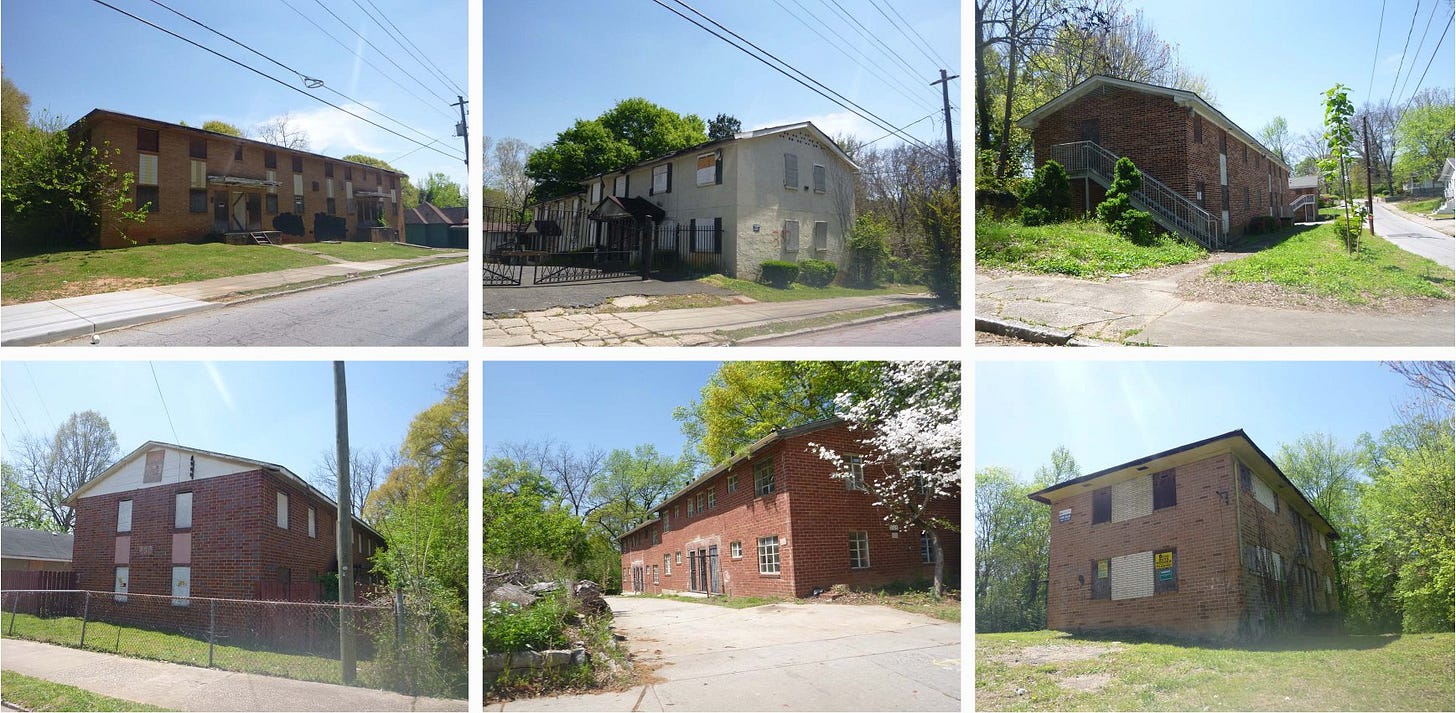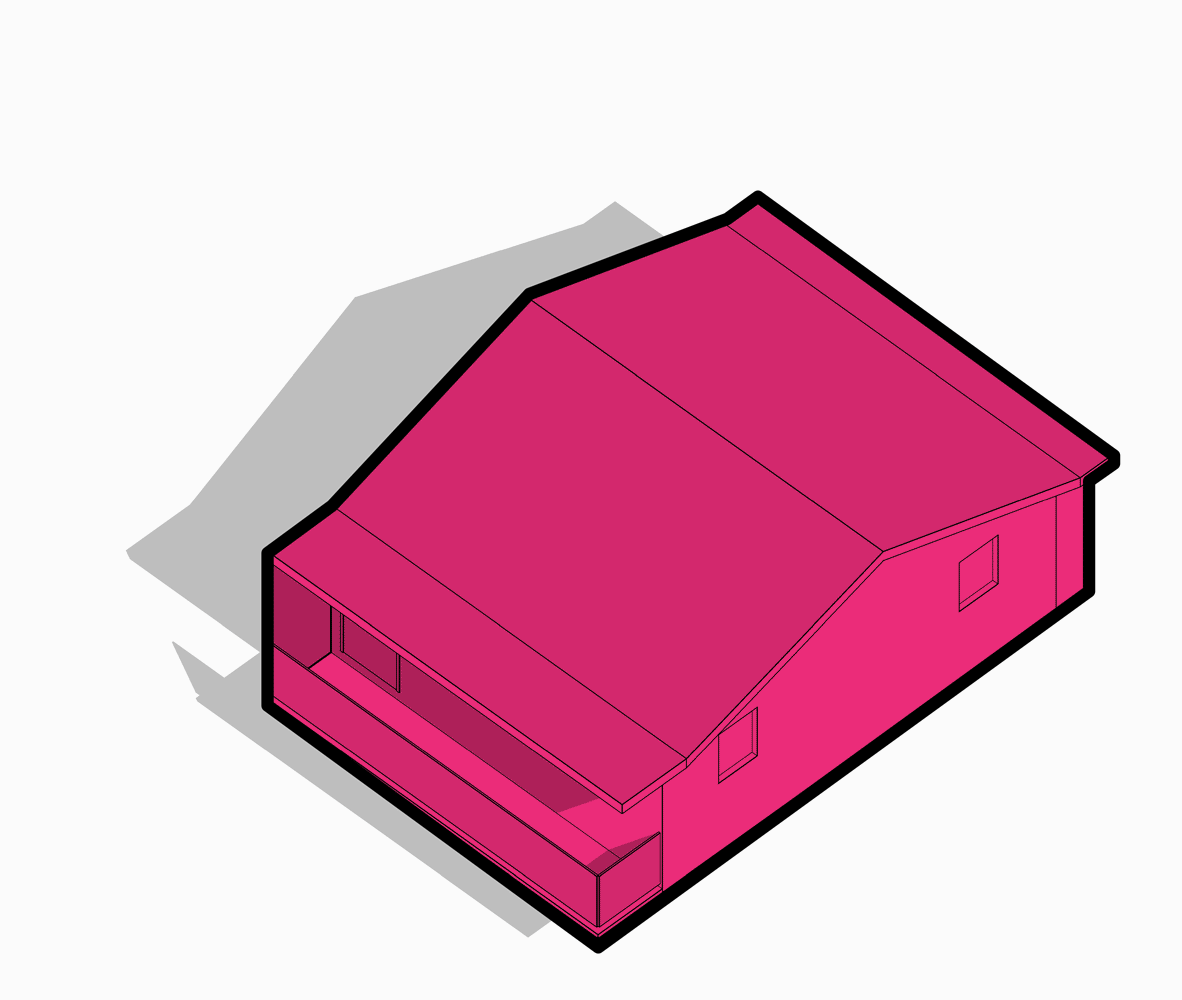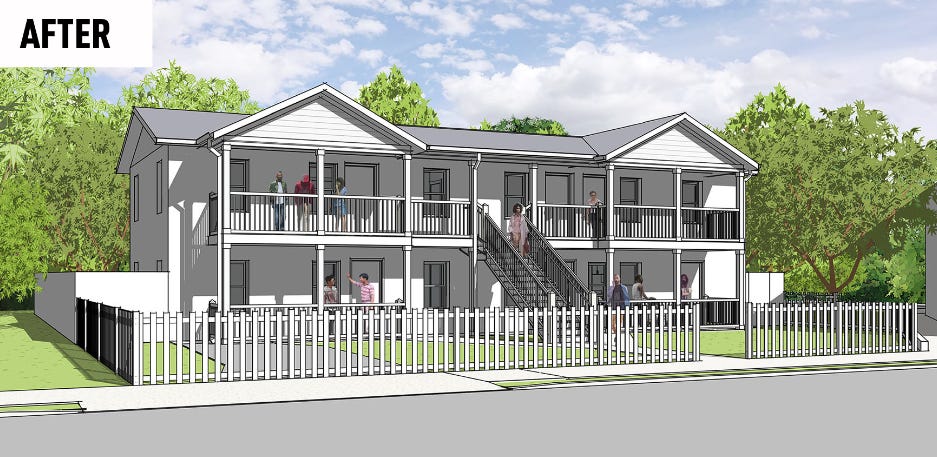DESIGN | Make Affordable Housing Cute Again
10 Ways to Make Low-Cost Housing Desirable
Written By Elizabeth Ward Williams
Atlanta has many charming historic Missing Middle Housing types, and we even have a new Missing Middle Housing zoning category to encourage more of it (more on MR-MU later). Atlanta also has many not-so-charming abandoned apartment buildings. While their lack of architectural charm leaves them overlooked, these are important to our city’s housing supply. Why? They, too, are Missing Middle Housing. They, too, are historic. And most importantly: They already exist, making them more affordable to renovate than to build new.
As adaptive reuse specialists who care about affordable housing, we at Kronberg Urbanists + Architects were thrilled about the opportunity to work with Westside Future Fund to rehabilitate a long-vacant sixplex in the English Avenue neighborhood. We viewed it as a chance to show that, with a little effort, these typologies can be dignified—perhaps even charming. We set out to create a toolkit of strategies for redeveloping these building types, with the hopes that local small developers could follow the same process. The adorable GIF above illustrates some of these strategies:
Cleanup: Remove the pieces that make the building feel uninviting, such as chain-link fences, sad balconies, doors with bars, and tiny windows.
Windows: Lower the sills of the existing windows. This is not required from a code standpoint, but it makes the building feel so much better from the outside, and so much brighter on the inside. Let there be natural light!
Porches: Add porches to provide extra living space for the small units and help activate both sides of the building. Street engagement is a big benefit here. We relocated a few doors to make sure each unit has its own private porch space, so that neighbors aren’t walking through each other’s porch to get to their unit. Bonus: You can use the porches to provide cute rail and trim details.
Roofline: Most of these buildings have unarticulated, low-slope roofs that look, well, sad. While replacing the whole roof is not necessary, adding a few new gables or shed roofs over the new porches helps give the building a more traditional form and scale. The porches add human activity. The accentuated rooflines humanize the building.
Sprinklers: Don’t forget about life safety. Most of these buildings were built before sprinkler systems were required. Now, multifamily buildings (with more than two units) do require them. Sprinklers mean adding a sprinkler riser (and a room for it go in), a new tap into the water line, and often (as in this case) upgrading the size of the existing water line. This is the biggest cost and hurdle to overcome in bringing these buildings back to life.
Curb Appeal: Improve the site by adding bicycle parking, landscaping, trees, and fences. Picket fences at the street help define the front yard without creating a barrier. New street trees can work wonders. Tip: In this area, Trees Atlanta will plant free street trees on most properties!
Parking? You may notice we haven’t mentioned parking. That’s because there isn’t any! The building was built before 1965, so no parking is required. Adding parking would increase costs and trigger commercial stormwater requirements, which could easily blow the budget and the workforce rents. A bus stop and on-street parking are available in front of the building.
And, let’s not forget about the interiors:
Exterior Walls: Furr out the walls on the interior. Most of these buildings are solid masonry, which isn’t great for insulation. Furring out the walls provides insulation, soundproofing, fireproofing, increased energy efficiency, and extra room for new MEP systems.
Interior Walls: Keep load-bearing walls in place, but don’t be scared to move non-load-bearing walls and doors to improve unit layout. We shifted a bathroom wall to gain more space for usability and switched the bedroom door location to have a better kitchen layout.
Fixtures: Most bathrooms and kitchens will require a full gut, which provides the opportunity to upgrade appliances and fixtures. If there’s space and a management system in place, consider providing a shared laundry room.
And finally, welcome your new tenants and pat yourself on the back for breathing life into a blighted building! Below is a photo of the existing building from this project and a rendering of what is to come…hopefully soon!
This piece was originally posted by Kronberg Urbanists + Architects .All photos provided by KUA.





